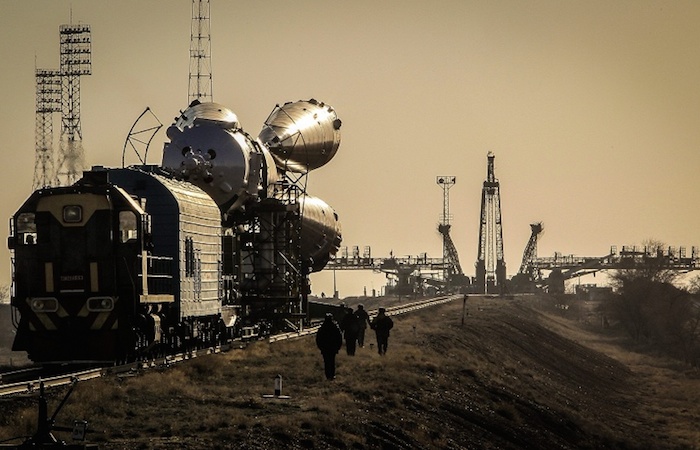.

World’s largest space center located at Baikonur, Kazakhstan, is marking the 60th anniversary since foundation.
It was from its launch pads that humankind open up the vistas for itself into outer space.
In 1957, the R-7 carrier rocket with the Sputnik, the first-ever satellite, lifted off from Baikonur and on April 12, 1961, Yuri Gagarin who started off into orbit on the Vostok 1 spacecraft inaugurated the era of manned flights.
Other milestones in the history of Baikonur include the testing of the ‘lunar’ launch vehicle N-1 and the liftoff of the Buran space shuttle in 1988. And in 1998, the launch of the Zarya module from there signaled the start of construction of the International Space Station.
June 2, 1955, the day on which the General Staff of the Soviet Armed Forces endorsed the tables of organization and equipment of the Military Bas 11284 for the testing or space technologies, is considered to be the birthday of the space center.
Sixty years on, Baikonur is believed to be the most reliable and actively used launch center in the world, where from more than 2,500 launches of carrier rockets with the spacecraft and probes of diverse types have been taken into space. Also, it became the gate for orbital missions for more than 130 cosmonauts and astronauts.
"Baikonur is a testing site and a launch pad, and for us it used to be a training ground where we studied what had been done previously so as to be able to understand what was to be done next," cosmonaut Sergei Krikalyov, who is currently Deputy Director General of the Central Research Institute of Mechanical Engineering, told TASS.
"That’s really a hub of Soviet and Russian cosmonautics and, on top of that, the history of world cosmonautics in general because our counterparts from the European Space Agency and NASA also made space starts from there," he said.
Krikalyov, who has a record of sojourn on space missions said he had appeared at Baikonur for the first time long before he became a member of the Detachment of Cosmonauts of the USSR. As a young engineer, he took part in in preparing spacecraft for launches.
What strikes a visitor to Baikonur is the alloy of the past and the future.
"The history that all of us have read about reminds us of Gagarin’s liftoff, the launchers of moon rockets - and when I got there for the first time the pads for the ‘lunar’ rockets were still in place - and on the other hand, there is the living present there, with the continuing launches of manned ships, modules, probes and so on," Krikalyov said.
He recalled the huge size of the space center where distances of dozens of kilometers separate one installation from another - a fact that creates definite problems in terms of maintenance of the infrastructure.
"There was a period when everything started falling into decay there and the infrastructure began to fall apart but now things are getting much better and conditions for the people who live and work there are obviously improving," Krikalyov said.
At present, Russia is leasing Baikonur from Kazakhstan for $ 115 million a year and is simultaneously building a new space center, Vostochny, in the Far-Eastern Amur region. The first launch from there is due to take place already this year.
However, Vostochny’s commissioning does not means Russia is going to abandon Baikonur
"I think Baikonur’s functionality should be maintained because much experience has been gained there," Krikalyov said. "I think Russia will be using both space centers simultaneously and that’s absolutely normal.".
Quelle: TASS
4227 Views
